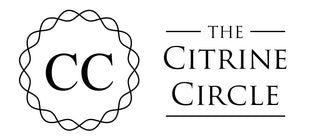Malachite is one of the most readily faked crystals around, and it can be confusing at first to know which is the real version and which are fakes. Many sellers label their jewellery or crystals as 'natural', when in fact they are offering synthetic Malachite. This doesn't just happen in places like Wish or Ebay, it is prolific on more reputable platforms like Etsy, your local crystal and holistic shops, and even big name spiritual chains in the US.
Find our genuine Malachite for sale here.
Genuine Malachite is formed in weathered Copper deposits, whereas fake Malachite can be made from plastic, glass or even polymer clay. Often fake Malachite is labelled as 'imitation', 'manmade', or even 'faux' to try and dress it up as something fancier. These are all genuine Malachite examples:




The first thing to generally look for is price. Real Malachite is not cheap, but the synthetic, or reconstituted versions tend to be. This isn't the case for everything, but it's a good starting point.
The next identifier is the colours and patterns. Real Malachite comes in a gorgeous assortment of swirls, waves, rings and stripes, whereas the fake versions tend to stick to the stripes as these are the easiest to achieve. The colours in real Malachite are all shades of green, from soft, light and pale greens to very dark greens and some so dark it appears black. Synthetic Malachite will often be medium green and flat black, with harsh contrast between the lines. They also tend to be a lot more uniform with only 2 - 4 different shades of green and black, whereas real Malachite won't have a repeating pattern and the shades often vary much more.


Another way to tell real Malachite is that it is a heavy crystal due to it's high copper content, heavier than glass and cold to the touch. As many Malachite imitations are created from plastic or clay, they are much lighter than you would expect genuine Malachite to be.
Another one to be aware of is reconstituted Malachite, this one treads the line between real and synthetic. It is created by using crushed Malachite offcuts or waste, and it is mixed with dyes or resin to form it back into shape. Due to the mixture of resin, it is lighter than normal Malachite, and although the colours look more natural, the patterns will again be often too uniform, and just look not quite right.
These are all examples of fake Malachite being sold as natural, or simply not labelled as to what they really are from Etsy and the internet.




Photo credits Etsy/Ebay inc Malachite donut from The Spiral Rock on Etsy
Shop our Malachite collection here.


Linda Norden
Thank you for this informative post. It’s both interesting & helpful.💚✅
Jen
Thanks for this very informative piece about spotting fakes. Wish and their Mama app is so full of people who bought fakes and it’s sad.
I would buy the stones on Wish for making jewelry or little decorative pieces but not with cheap Chinese made obvious fakes.
Kirsty
Really good piece. Had no idea malachite was so fake a lot of the time. Bet they still want good money for it. That’s why I love the cc!!! Xxxx